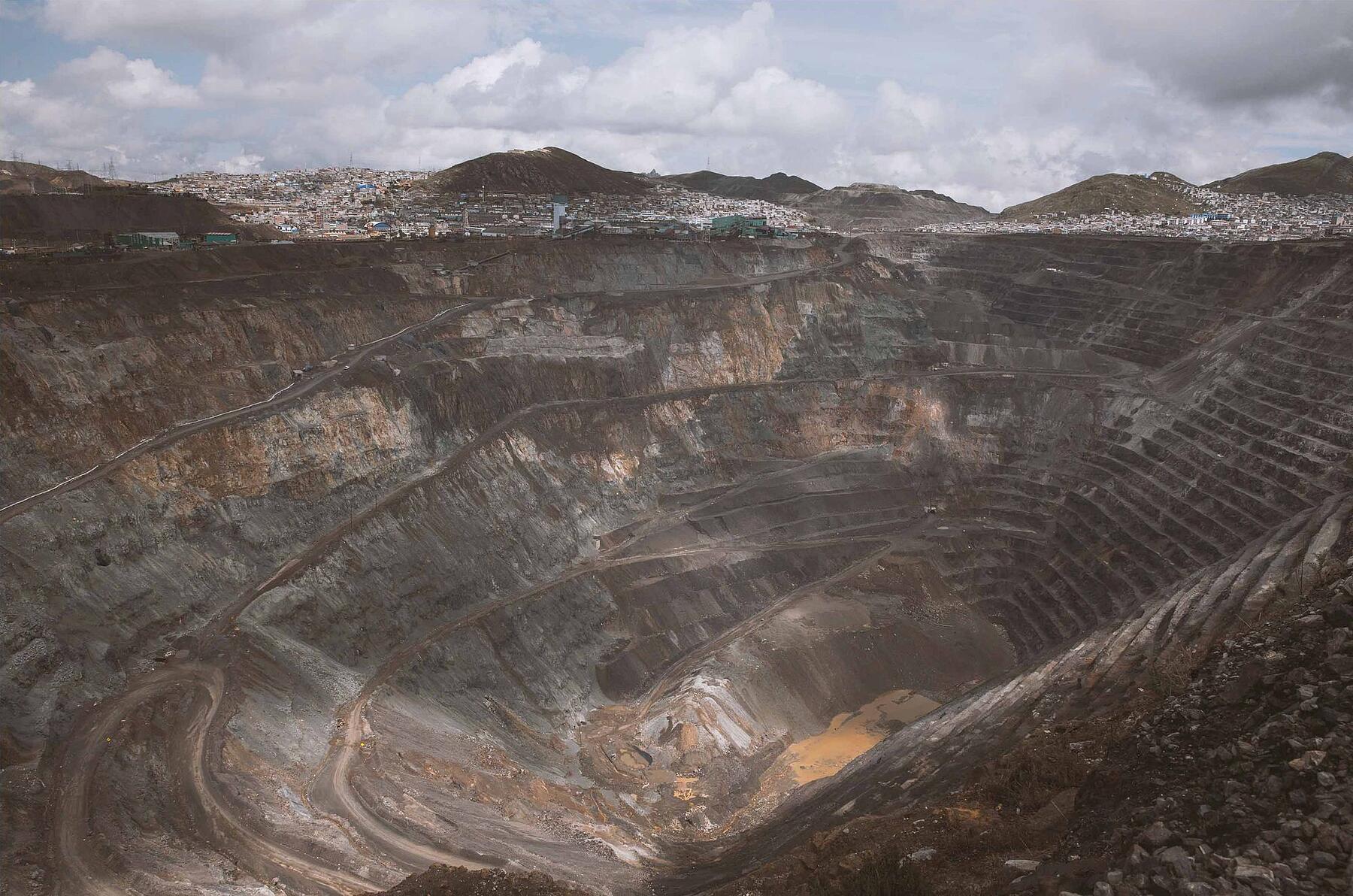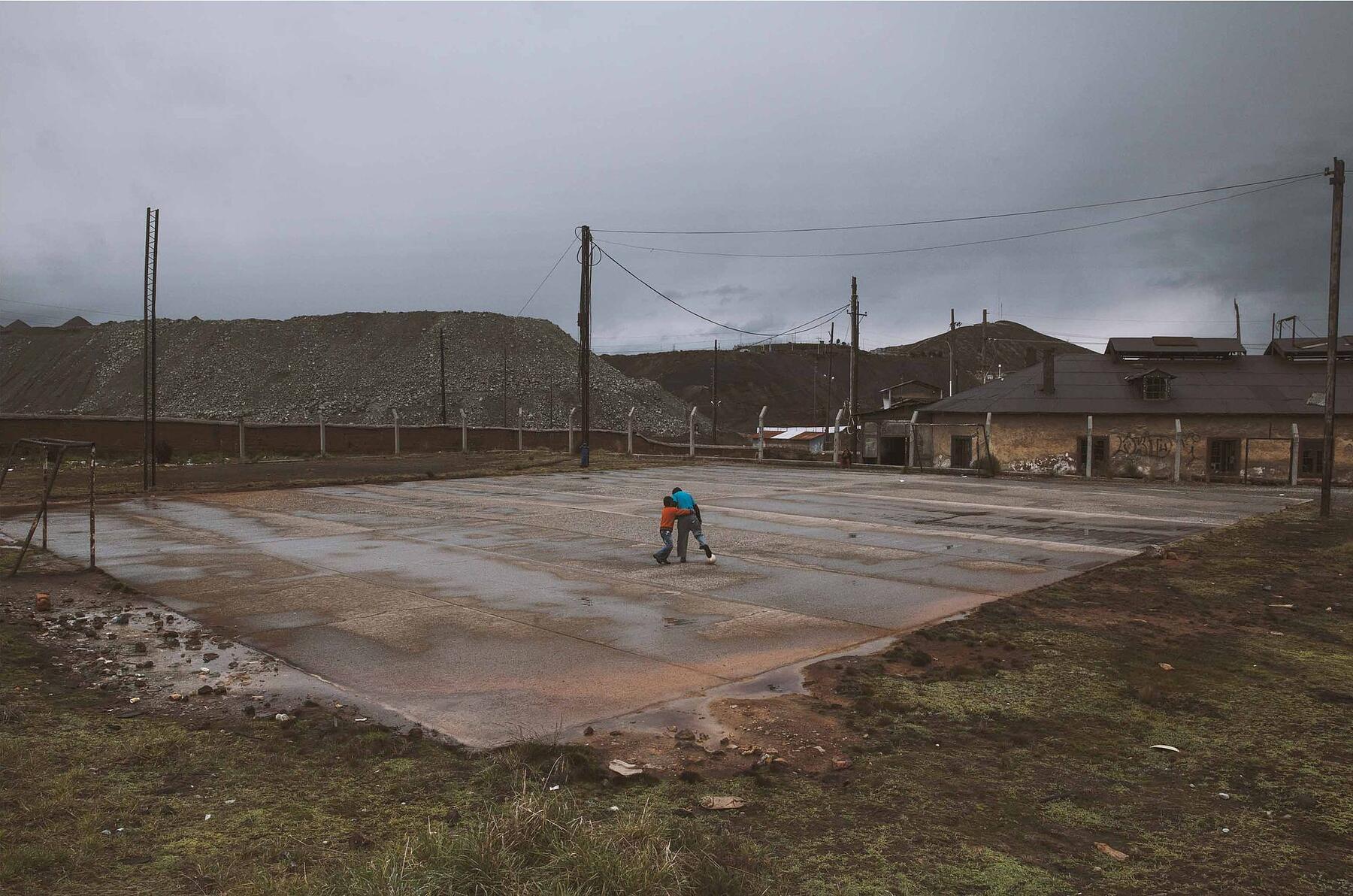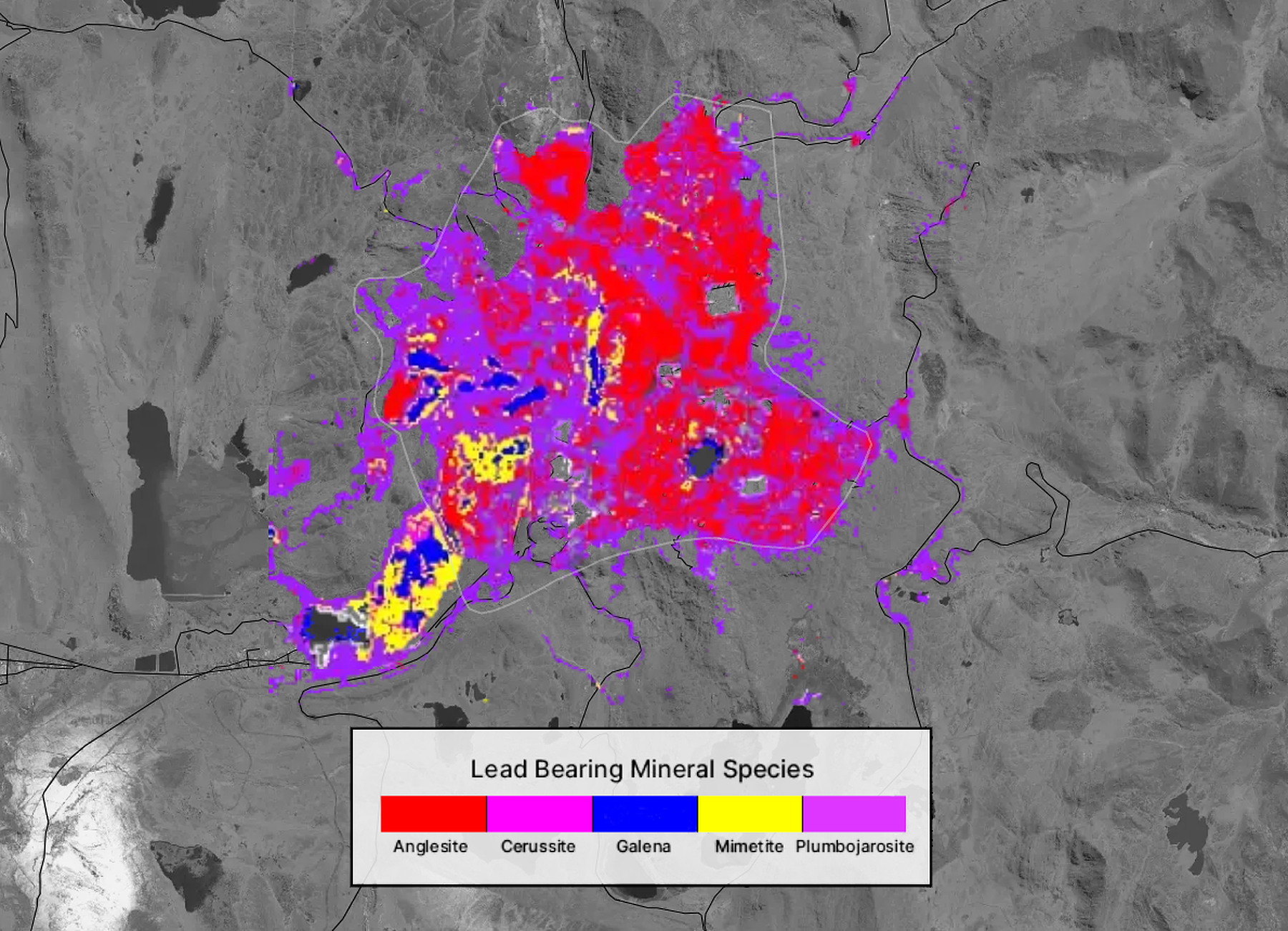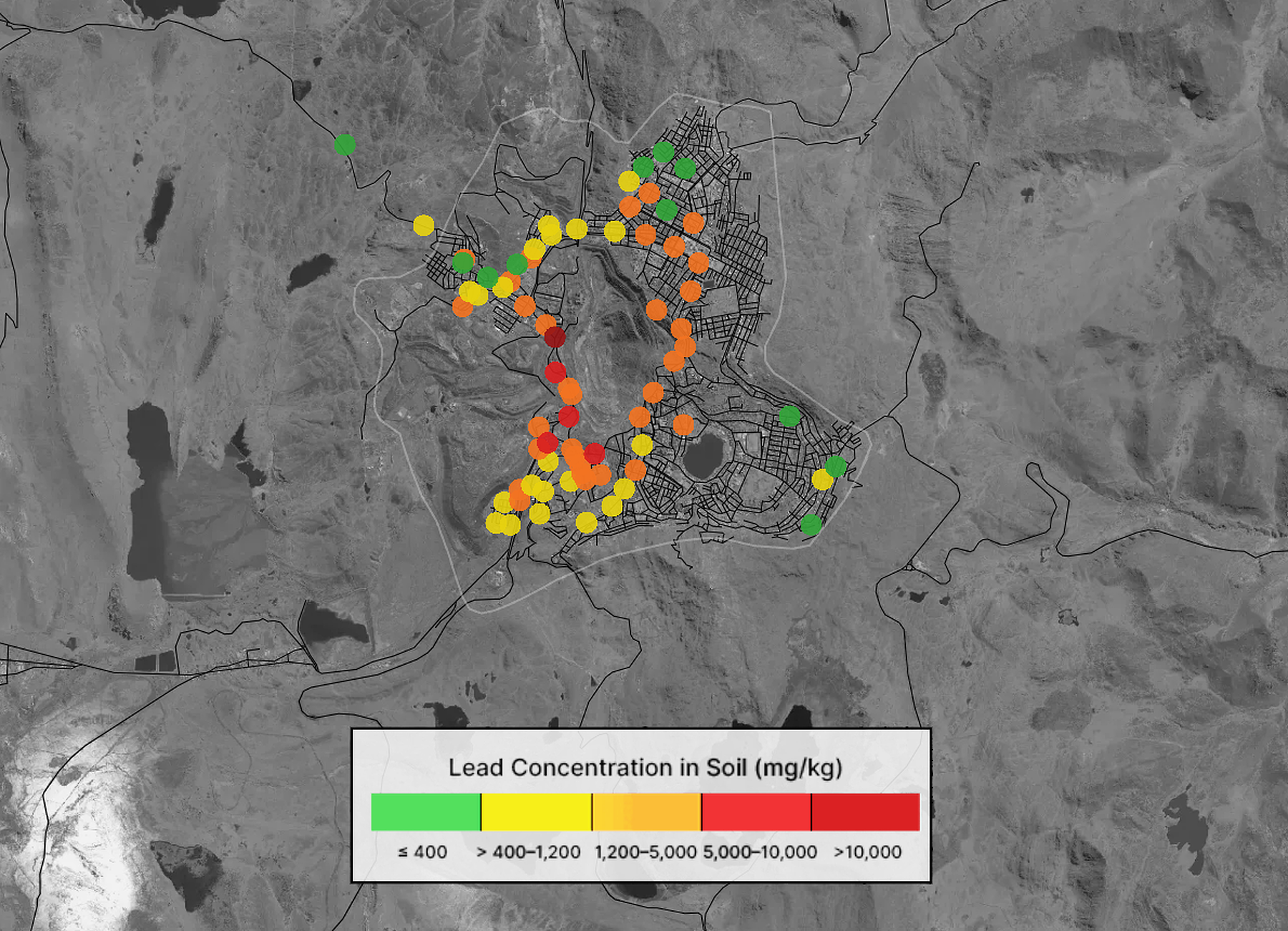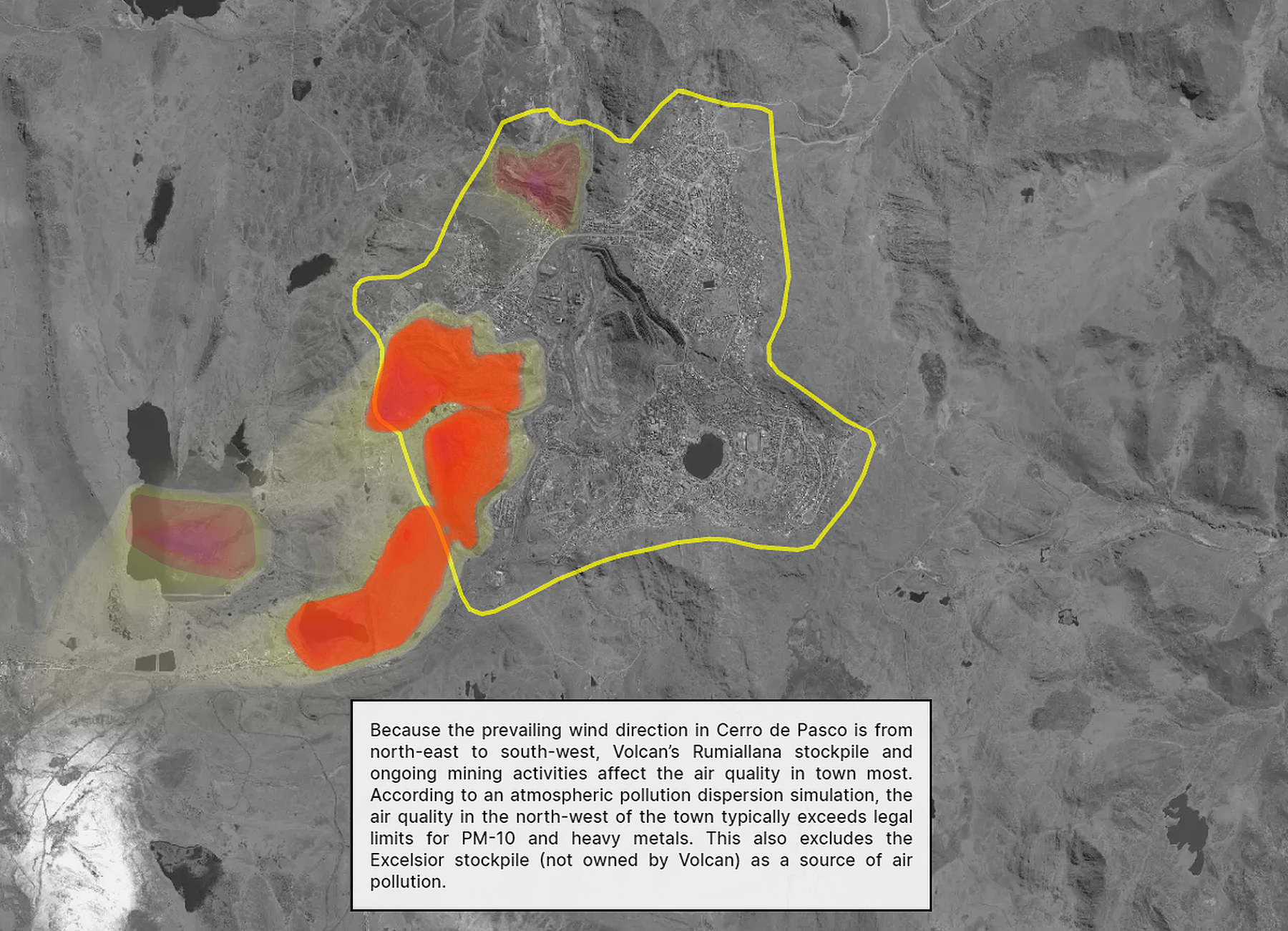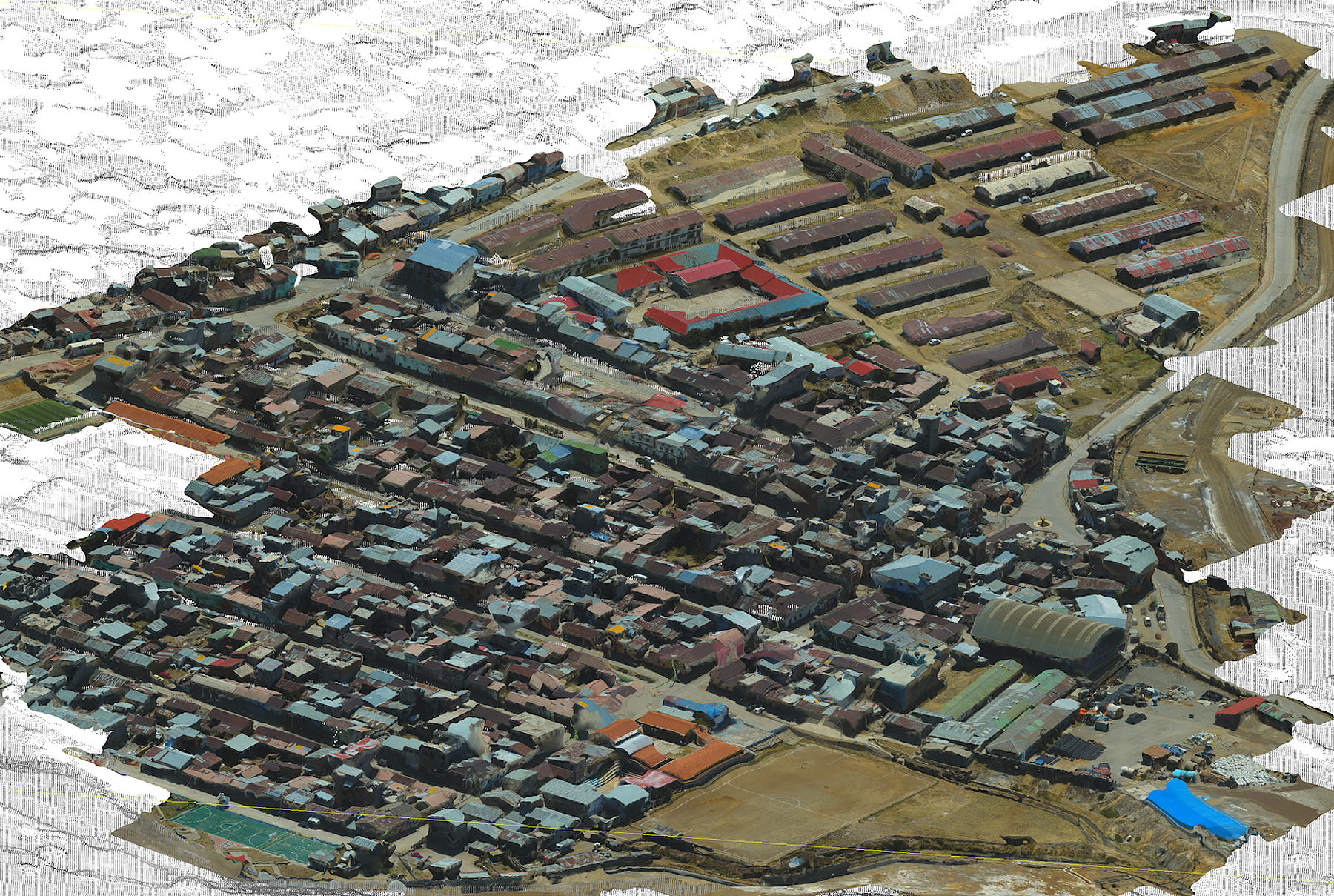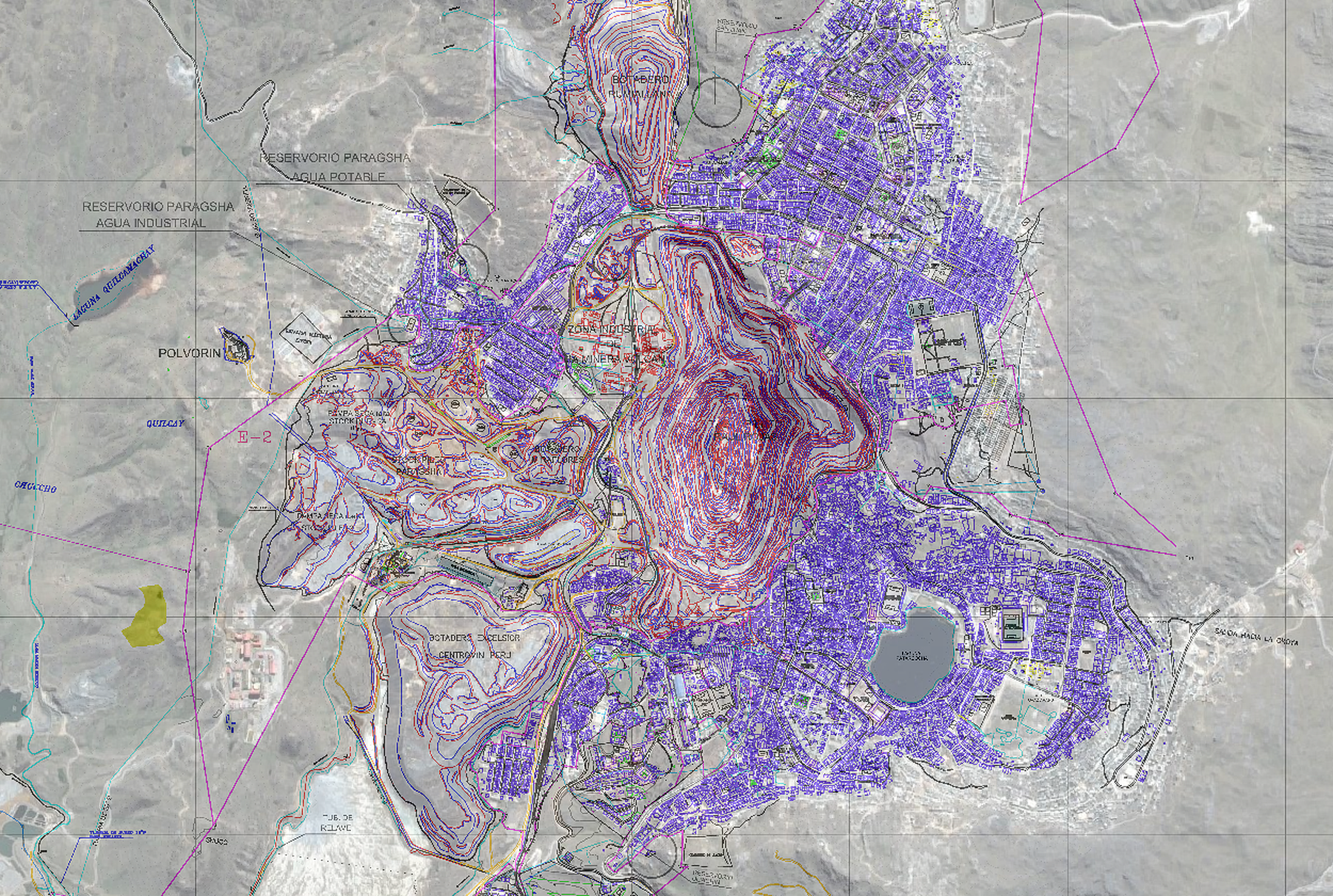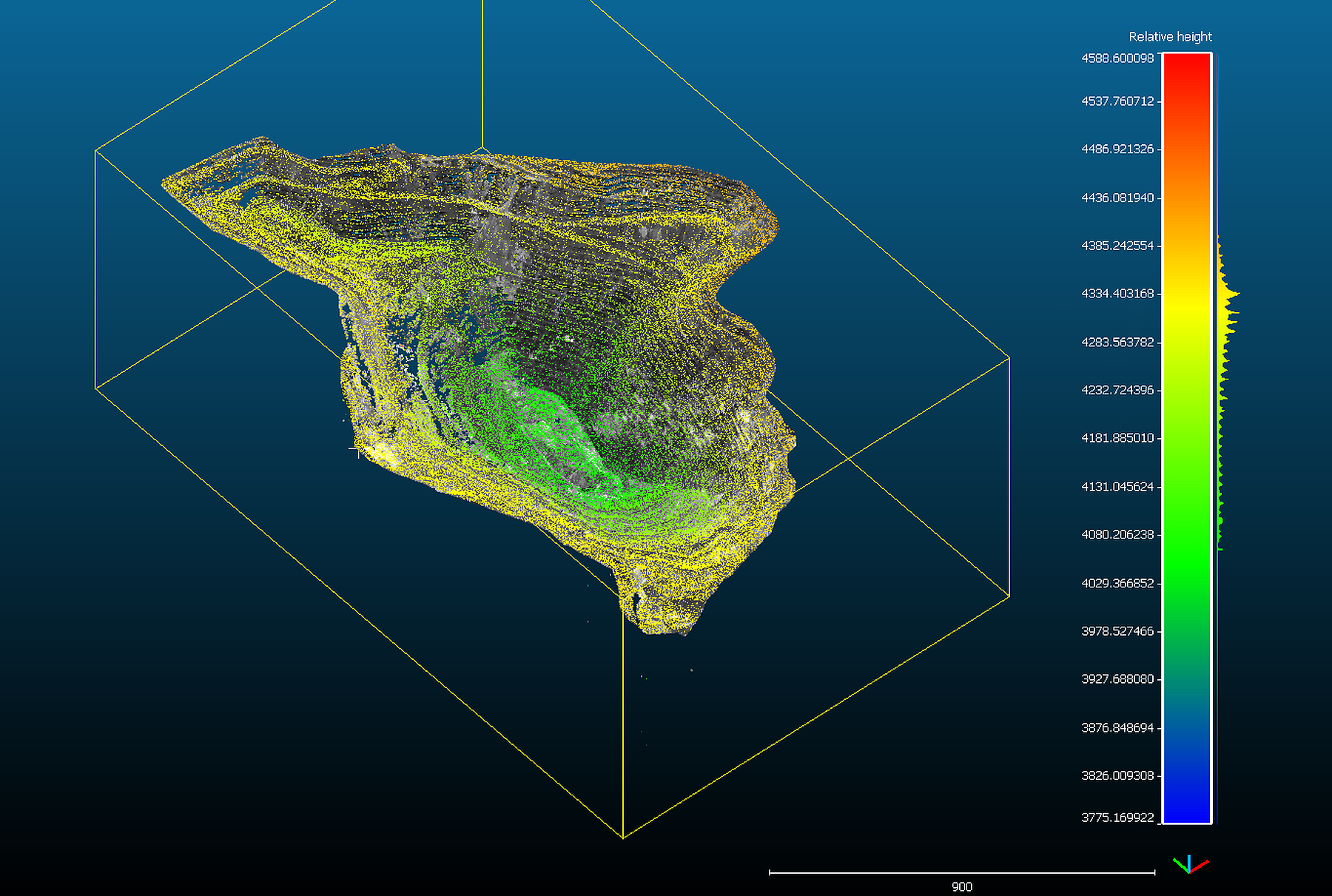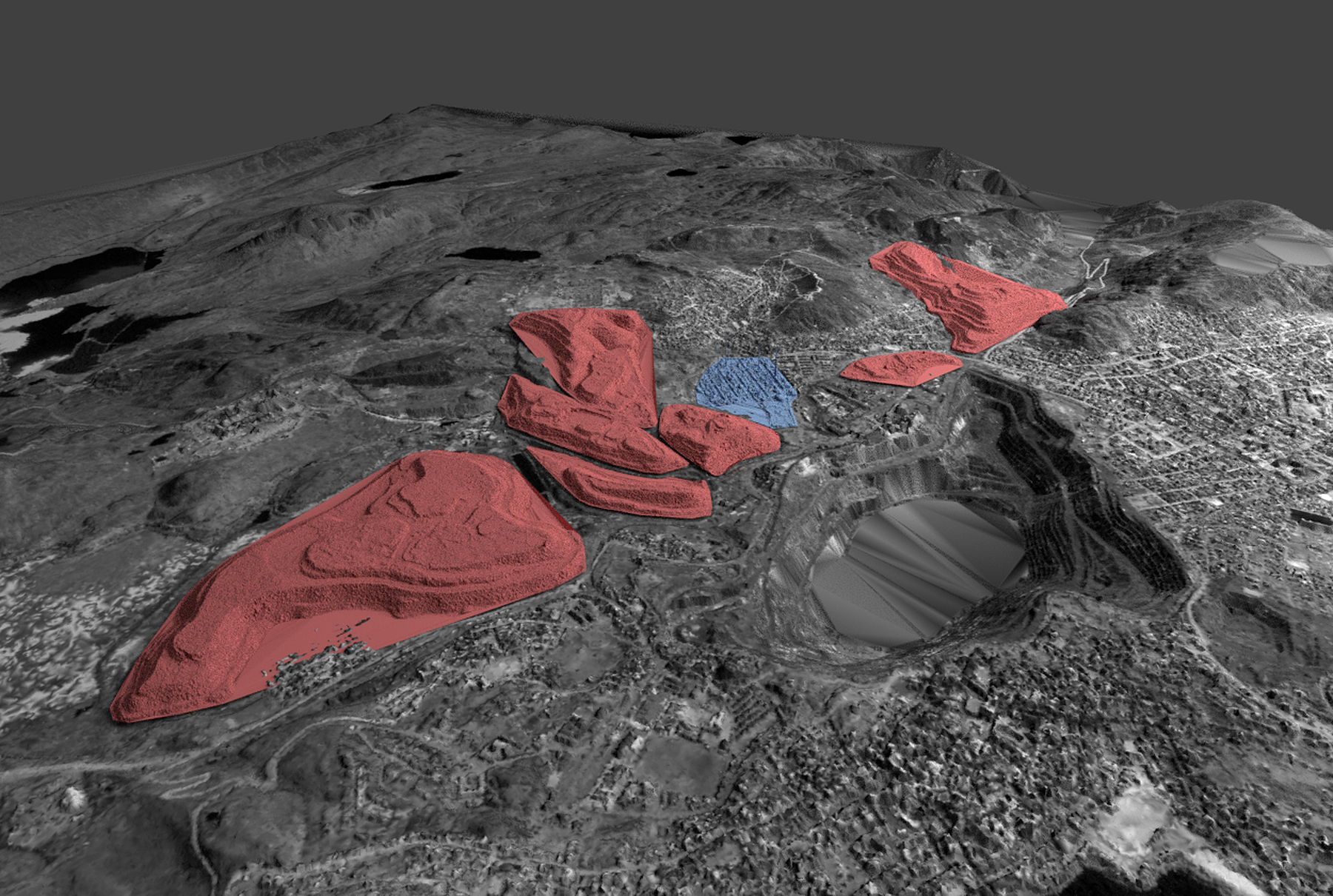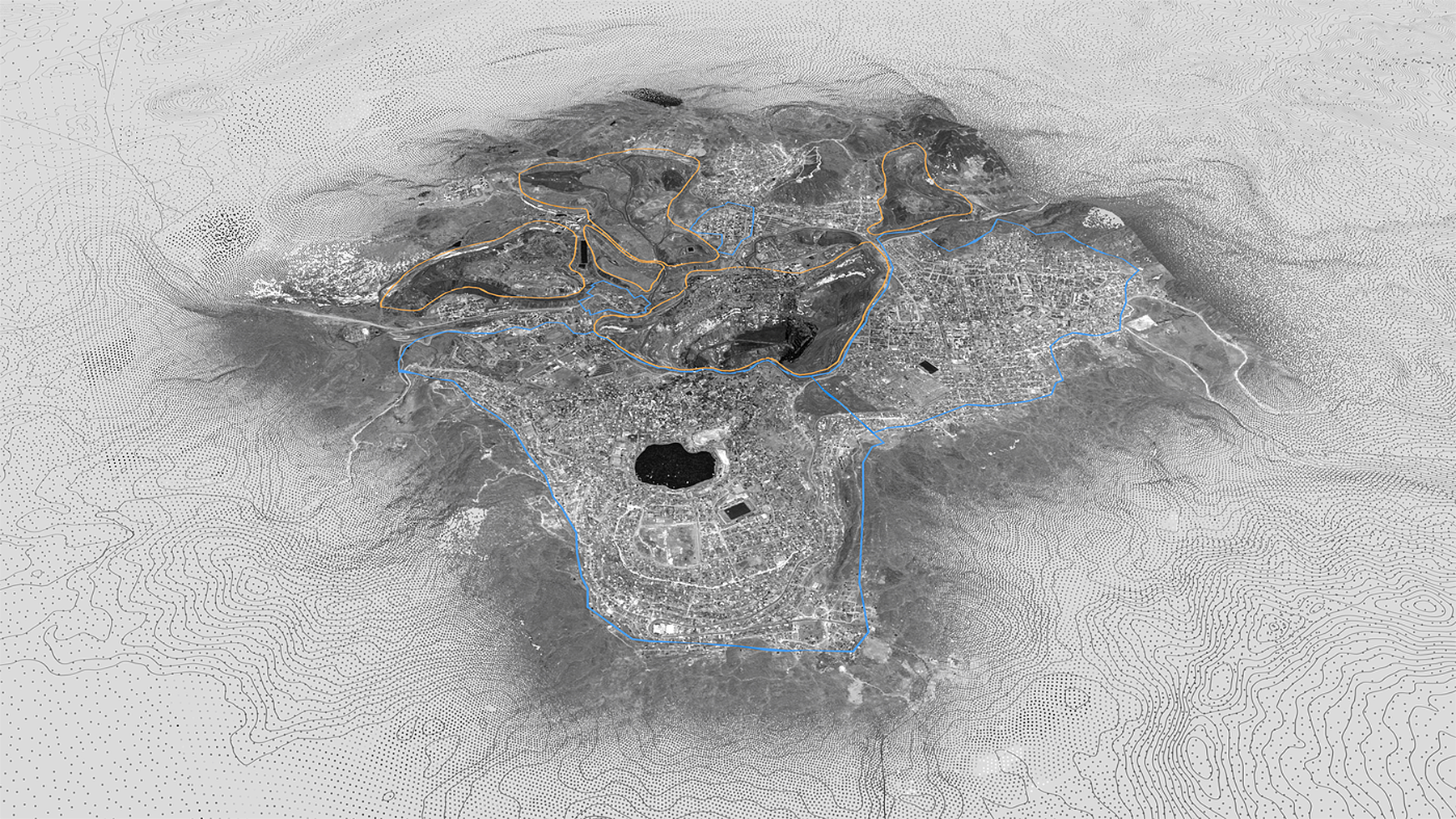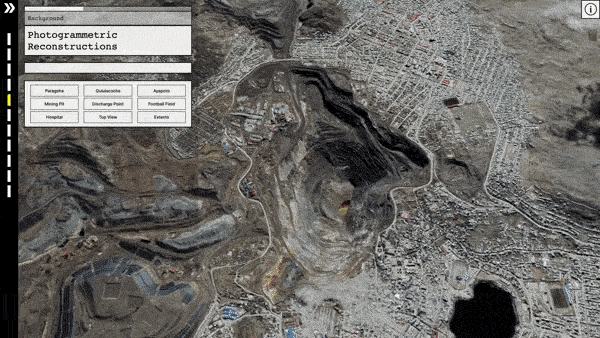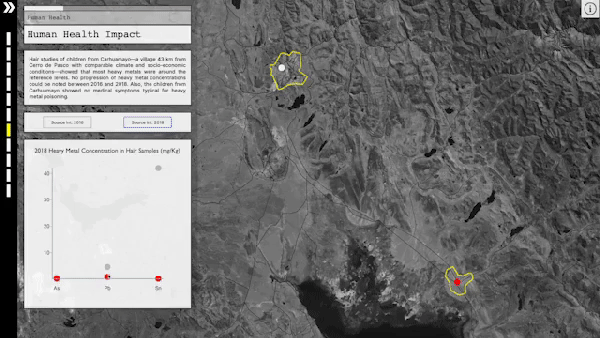Documenting Environmental Crime in Cerro de Pasco
An in-depth examination of the impact of heavy metal extraction on the environment and human health in Cerro de Pasco, Peru.
Collaborators
CCCA, Source International, Oak Ridge National Laboratory, Human Rights Center UC Berkeley
Location
Cerro de Pasco, Peru
Completion
2020
The Peruvian city of Cerro de Pasco has a history of mining that stretches back nearly 400 years, to early Spanish colonization. Over the last few decades, the mines of Cerro de Pasco have been exploited extensively for metals like lead, zinc, and silver, and an open pit mine some 300 meters deep now dominates this city of 70,000, high in the Peruvian Andes.
As a result of this extensive mining activity, Cerro de Pasco and its natural surroundings are heavily polluted, with dire consequences for the health of the city’s residents. Hazardous contaminants such as lead and arsenic are found in high concentrations in the soil and drinking water, and heavy metal poisoning is widespread in the urban population. Our interactive platform, developed in collaboration with Source International and the Center for Climate Crime Analysis, provides a detailed and comprehensive look at the dangerous conditions the mining operations create for the people of Cerro de Pasco.
The goal with this work was to demonstrate that, despite the complexities inherent to such cases, it is quite feasible to leverage existing research, interdisciplinary partnerships and emerging technologies to definitively identify the causes of long-term environmental damage and resulting threats to human health. To this end, the platform presents a methodological precedent for corporate accountability — a tool for navigating the range of data relevant for documenting environmental and human rights violations perpetrated by large industrial scale mining and extractives operations.
Objectives
A principal objective of the interactive platform was to effectively synthesize the findings of a plethora of different scientific studies. Data showing the levels of heavy metal contamination in soil, air, water and human tissue all tell the same story and point to the same conclusions, but each study is unique and the data itself lacks a common structure that would be conducive to a comprehensive understanding. The platform makes it possible to view all the different evidence of the environmental crisis against a consistent geospatial backdrop, providing a common frame of reference and uniting the disparate datasets into an accessible but powerful portal.
The use of an immersive 3D environment helps to place the abstract data squarely within a recognizable geographic, urban and human context — a critical step to effectively communicate the scientific findings to a broader audience. Similarly, photographs and videos showing the conditions on the ground — ore stockpiles towering over crowded low-income residential neighborhoods and polluted water thick with sediment — complement the detailed data collected by Source International to underscore the pervasive impact of the mining operations on the quality of everyday life for Cerro de Pasco’s most vulnerable residents.
The ability to intuitively navigate between distinct data sets documenting the adverse effects of mining in Cerro de Pasco provides a more holistic picture of a complex environmental situation that goes beyond any single study or method of documentation. Collectively, the evidence contained on the platform makes clear the severity of the current crisis as well as the underlying causes that precipitated and continue to prolong it.
Methodology
Actual contamination levels in Cerro de Pasco were evaluated through various means, including on-site soil and water sampling, hair sampling from children in the local population, and using hyperspectral satellite imagery to detect lead bearing mineral species in the soil of the surrounding area. Importantly, these studies spanned a period of more than ten years, tracing the dramatic worsening of the situation over time as mining operations have continued mostly unabated.
SITU Research integrated the findings of multiple scientific studies to combine all the datasets within a cohesive geospatial framework. This analytical data was then layered on top of a composite 3D model of Cerro de Pasco and its environs, which combines data at multiple different resolutions to achieve an accurate and immersive representation of the city. Photogrammetric models made from aerial drone footage provide a high level of detail and realism for specific areas, while stereoscopically-derived digital elevation models (DEM) — produced from satellite imagery — fill in the gaps at a lower resolution where drone flights are not permitted.
This interactive environment model can then be used as a base map to contextualize not only geo-referenced measurement data, but also compelling visual evidence such as photographs and videos. The ease of navigation between pieces of evidence and the spatial comprehension that this method provides simply cannot be replicated by more traditional means of presentation.
Advocacy & Outcomes
Volcan, the Peruvian company which owns and operates the Cerro de Pasco mine, has been found responsible for at least 57 different violations of legally enforceable environmental regulations by the Peruvian authorities. Since late 2017, Glencore — a mining and commodities multinational headquartered in Switzerland — has been Volcan’s majority owner. In November 2020, video of this interactive platform was used as part of an advocacy campaign to build public support for a proposed amendment to the Swiss constitution, which would have created new legal accountability for Swiss companies committing environmental and human rights violations abroad.
While the proposed amendment received a narrow majority of the popular vote in Switzerland, it failed to receive the needed majority of the Swiss cantonal vote, and accordingly failed to pass. One objection raised by opponents of the initiative was that evaluating complex alleged violations abroad would place an undue burden on the Swiss legal system. The success of this platform, however, calls such arguments into question, and provides a key example of how such complex cases could be effectively litigated, were the necessary legal mechanisms in place to act on the evidence and sanction the responsible parties. In the meantime, advocates of the proposed amendment point to the popular victory as evidence that broad support for strengthened corporate accountability laws continues to grow steadily in Switzerland and beyond.
